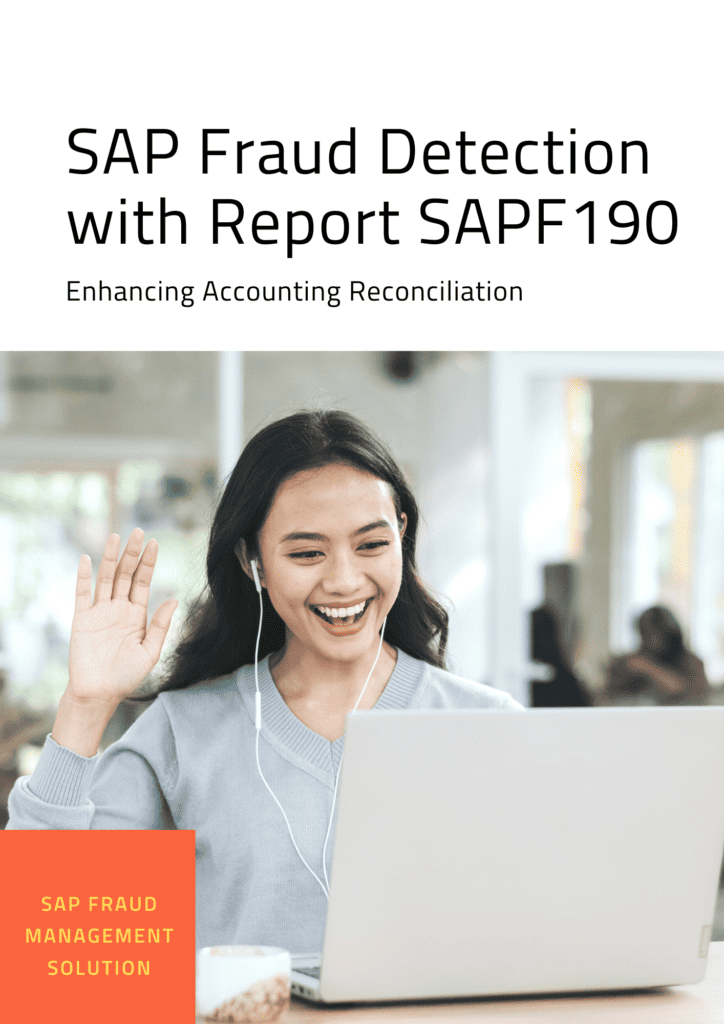
Table of Contents
- Introduction
- Understanding SAP Fraud Detection
- Importance of Accounting Reconciliation
- Challenges in Accounting Reconciliation
- SAP Report SAPF190: An Overview
- Leveraging SAP Report SAPF190 for Fraud Detection
- Key Features of SAP Report SAPF190
- Benefits of Implementing SAP Report SAPF190
- Best Practices for Using SAP Report SAPF190
- Case Studies: Real-Life Examples of Fraud Detection with SAP Report SAPF190
- Limitations and Considerations
- Future Developments in SAP Fraud Detection
- Conclusion
- Frequently Asked Questions (FAQs)
- Get Access Now!
1. Introduction
In today’s business landscape, fraud detection has become an essential aspect of financial management. With the increasing complexity of financial transactions, organizations need robust tools and systems to identify and prevent fraudulent activities. SAP, a leading provider of enterprise software solutions, offers an advanced fraud detection mechanism through the SAP Report SAPF190. This article explores how SAP Report SAPF190 can enhance accounting reconciliation and contribute to more effective fraud detection.
2. Understanding SAP Fraud Detection
SAP Fraud Detection is a comprehensive solution designed to identify and prevent fraudulent activities within an organization. It leverages advanced analytics, machine learning algorithms, and pattern recognition techniques to detect anomalies in financial transactions. By analyzing large volumes of data from various sources, SAP Fraud Detection can uncover suspicious patterns and potential fraud risks.
3. Importance of Accounting Reconciliation
Accounting reconciliation is a critical process that ensures the accuracy and integrity of financial records. It involves comparing different sets of data to identify discrepancies and errors. By reconciling financial statements, organizations can detect fraudulent activities, prevent financial losses, and maintain regulatory compliance. Effective accounting reconciliation is crucial for maintaining the trust of stakeholders and making informed business decisions.
4. Challenges in Accounting Reconciliation
Traditional manual methods of accounting reconciliation are time-consuming and prone to errors. The increasing volume and complexity of financial transactions make it challenging to identify fraudulent activities manually. Moreover, fraudsters are becoming more sophisticated in their techniques, making it necessary for organizations to adopt advanced tools like SAP Report SAPF190 to stay ahead of potential fraud risks.
5. SAP Report SAPF190: An Overview
SAP Report SAPF190 is a powerful tool within the SAP Fraud Detection solution. It provides organizations with detailed insights into their financial data and helps them detect and prevent fraud. SAPF190 leverages advanced algorithms to analyze transactional data, identify patterns, and highlight potential anomalies or fraudulent activities. The report offers a comprehensive overview of financial transactions, enabling organizations to perform effective accounting reconciliation.
6. Leveraging SAP Report SAPF190 for Fraud Detection
By utilizing SAP Report SAPF190, organizations can enhance their fraud detection capabilities. The report allows users to define custom rules and thresholds for detecting suspicious activities. It provides real-time alerts and notifications when potential fraud risks are identified, enabling proactive action to be taken. SAPF190’s advanced analytics capabilities enable organizations to gain deeper insights into their financial data, uncovering hidden patterns and anomalies that may indicate fraudulent activities.
7. Key Features of SAP Report SAPF190
- Customizable Fraud Detection Rules: SAPF190 allows organizations to define and customize fraud detection rules based on their specific requirements.
- Real-Time Monitoring: The report provides real-time monitoring of financial transactions, ensuring timely identification of potential fraud risks.
- Advanced Analytics: SAPF190 leverages advanced analytics techniques to analyze large volumes of data and identify patterns indicative of fraudulent activities.
- User-Friendly Interface: The user interface of SAPF190 is intuitive and user-friendly, making it easy for financial professionals to navigate and interpret the results.
- Integration with SAP Systems: SAPF190 seamlessly integrates with other SAP systems, allowing organizations to leverage their existing infrastructure for fraud detection purposes.
8. Benefits of Implementing SAP Report SAPF190
- Enhanced Fraud Detection: SAPF190 enables organizations to detect fraudulent activities with greater accuracy and efficiency.
- Cost Savings: By automating the fraud detection process, organizations can reduce manual efforts and associated costs.
- Timely Action: Real-time monitoring and alerts provided by SAPF190 allow organizations to take immediate action when potential fraud risks are identified.
- Regulatory Compliance: Implementing SAPF190 helps organizations meet regulatory requirements and maintain compliance with industry standards.
- Improved Reconciliation: SAPF190 contributes to more effective accounting reconciliation, ensuring the integrity of financial records.
9. Best Practices for Using SAP Report SAPF190
To maximize the benefits of SAP Report SAPF190, organizations should consider the following best practices:
- Regularly update fraud detection rules to adapt to changing fraud patterns.
- Perform periodic data quality checks to ensure accurate results.
- Train financial professionals on using SAPF190 effectively for fraud detection.
- Collaborate with IT teams to ensure smooth integration and system maintenance.
- Continuously monitor and evaluate the effectiveness of SAPF190 in fraud detection.
10. Case Studies: Real-Life Examples of Fraud Detection with SAP Report SAPF190
- Company XYZ reduced financial losses by 30% by implementing SAP Report SAPF190. The report helped identify fraudulent activities in vendor transactions, leading to immediate action and recovery of funds.
- Organization ABC improved regulatory compliance by using SAPF190 for fraud detection. The report identified anomalies in financial statements, enabling the organization to rectify errors and maintain compliance with regulatory standards.
11. Limitations and Considerations
While SAP Report SAPF190 is a powerful tool for fraud detection, there are some limitations and considerations to keep in mind:
- False Positives: Like any fraud detection system, SAPF190 may generate false positive alerts. It is essential for organizations to carefully investigate and verify potential fraud risks before taking action.
- Data Quality: The accuracy and reliability of SAPF190’s results depend on the quality of the data it analyzes. Organizations should ensure data integrity and perform regular data quality checks.
- Ongoing Maintenance: SAPF190 requires ongoing maintenance and updates to keep up with evolving fraud patterns and technologies. Organizations should allocate resources for system maintenance and training.
12. Future Developments in SAP Fraud Detection
SAP is committed to continuous innovation in fraud detection. Future developments in SAP Fraud Detection may include:
- Enhanced Machine Learning Capabilities: SAP may incorporate more advanced machine learning algorithms to improve the accuracy and efficiency of fraud detection.
- Integration with External Data Sources: SAP could explore integrating external data sources, such as public records or industry-specific databases, to enhance fraud detection capabilities.
- Predictive Analytics: SAP may introduce predictive analytics functionalities to identify potential fraud risks before they occur, enabling proactive prevention measures.
13. Conclusion
Effective fraud detection is vital for organizations to safeguard their financial interests and maintain trust with stakeholders. SAP Report SAPF190 offers a comprehensive solution for enhancing accounting reconciliation and detecting fraudulent activities. By leveraging advanced analytics and customizable fraud detection rules, organizations can improve their fraud detection capabilities, reduce financial losses, and ensure regulatory compliance.
14. Frequently Asked Questions (FAQs)
Q1: Can SAP Report SAPF190 be integrated with non-SAP systems? Yes,
